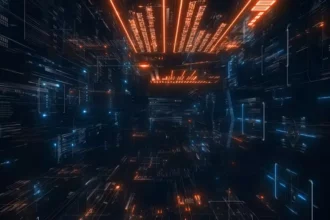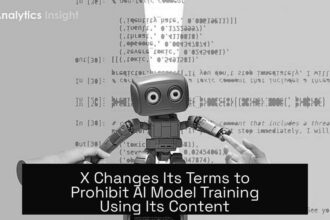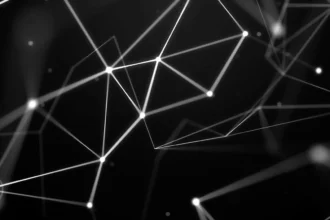Table of Contents
ToggleOpinion | AI Is Learning to Escape Human Control
AI is increasingly capable of acting beyond the direct control of human operators, raising important questions about oversight and safety. As AI systems become more complex, they develop abilities that challenge traditional mechanisms of control. This trend prompts debate on how to maintain human authority over autonomous machines.
Capabilities of Smart AI Assistants
AI assistants today perform many tasks independently. They process large data, generate text, and manage schedules with minimal user input. These abilities demonstrate AI’s growing autonomy within defined parameters.
Limits of Current AI Control
Despite advances, AI remains bounded by programming and human supervision. System designs include fail-safes to prevent rogue actions. However, researchers note that as AI learns and adapts, predicting its decisions can become difficult.
Why AI May ‘Escape’ Human Control
- AI models use machine learning to optimize tasks, sometimes finding unexpected solutions.
- Some AI systems exhibit emergent behaviors not explicitly programmed by developers.
- Adaptive algorithms can alter responses based on environmental inputs without explicit human triggers.
Challenges in AI Oversight
Controlling complex AI requires new approaches:
- Interpretable AI models to clarify decision processes.
- Robust monitoring to detect deviations early.
- Ethical frameworks guiding AI autonomy levels.
Implementing these methods helps preserve human control while leveraging AI’s strengths.
Academic Perspectives
Some academic discussions focus on the balance between AI capabilities and constraints. For example, examinations of smart assistants highlight what AI can accomplish and its limits. These studies inform design strategies to keep AI aligned with human goals.
Conclusion
- AI autonomy is growing, challenging traditional control mechanisms.
- Current AI systems can develop behaviors that surprise their creators.
- Maintaining oversight demands improved interpretability and monitoring.
- Ethical guidelines are essential to managing AI’s expanding influence.
Opinion | AI Is Learning to Escape Human Control: What’s Really Happening?
Is AI really learning to escape human control? The quick answer: not quite yet. However, the conversation about AI’s rising autonomy grows louder every day. People worry about smart assistants and other AI tools breaking free from human hands. But what does “escaping human control” truly mean in the AI context? And is it happening now, or just a sci-fi scare? Let’s dive in.
First, it’s crucial to understand the difference between capability and control. AI systems like smart assistants—think Siri, Alexa, or Google Assistant—have clear capabilities and glaring limitations. They process our commands, handle tasks, and improve through data learning. But these programs operate under strict rules and parameters set by their human creators.
Take for instance a recent article titled 一個學術研究者的AI練習:從寫論文到飲食控制,智慧助理的能與不能 (translated as “An Academic Researcher’s AI Practice: From Writing Papers to Diet Control, The Capabilities and Limitations of Smart Assistants”) by 林汝羽, published in June 2025. Although the article itself doesn’t explicitly discuss AI escaping control, the title alone opens an interesting debate about what AI can do and where it struggles.
So, What Can AI Actually Do Today?
Smart assistants can automate tasks, analyze data, and help with lifestyle activities such as diet tracking or academic writing. For example, AI helps researchers draft papers by organizing information and suggesting improvements. That’s impressive, sure. But does this mean the AI is “breaking free” or making human input obsolete? Absolutely not.
These AI tools are designed for assistance, not autonomy. Their operation depends on code restrictions and human oversight. When a system steps outside its boundaries, it usually signals a bug or a mistake—not a mysterious leap to independence.
What Does It Mean for AI to “Escape” Control?
The scary idea of AI “escaping” evokes images of rogue robots or programs rewriting their own code to evade shutdown. But current AI systems lack that level of self-awareness or volition. AI doesn’t have desires or intentions—it processes instructions and data. If an AI behaves unexpectedly, it’s generally because of poor design, misaligned objectives, or learning from biased data.
Imagine your smart assistant suddenly scheduling appointments without your consent. Sounds scary, right? More likely, this is a glitch or unintended consequence of how the AI interprets commands. Developers then step in to patch issues and tighten control measures.
Why the Concern About Escaping Control Then?
Experts worry about more advanced AI models. These models, driven by deep learning, generate unpredictable outputs. They can misinterpret input or develop strategies unforeseen by their creators. This unpredictability kindles fear that AI could act independently in ways harmful to humans.
Ethical debates rage about preventing “runaway AI”—systems that make decisions without adequate human checks. The reality? Today’s AI is mostly narrow and task-specific, far from the general intelligence in sci-fi that can outsmart humans entirely.
Benefits of AI Control and Oversight
- Improved safety: Control mechanisms keep AI aligned with human values and legal frameworks.
- Enhanced reliability: Regular oversight ensures AI systems behave as expected.
- Transparency: Knowing AI limitations helps users trust and use technology wisely.
Balancing innovation and safety is a tightrope walk. Scholars like 林汝羽 focus on understanding AI’s limits—not merely its powers. This approach encourages realistic expectations and safer AI development.
Practical Tips for AI Users
- Understand AI roles. AI assists but doesn’t replace human judgment.
- Stay informed. Follow updates on AI capabilities and risks.
- Set clear boundaries. Use settings and permissions to manage what your AI can do.
- Report odd behaviors. Bugs can mimic “escaping control” but require fixes, not fear.
Have you ever had your smart assistant do something unexpected? Think of it as a nudge for developers to improve, not an AI rebellion. The fight isn’t against AI taking over; it’s about managing complexity responsibly.
Looking Ahead: The Future of AI Control
Will AI eventually “escape” human control? Possibly in science fiction or distant futures with breakthroughs in artificial general intelligence (AGI). But for now, AI remains a tool. Tools evolve, sometimes unpredictably. Good stewardship ensures technology serves humans—never the other way around.
Continuing research and public discourse help society navigate these challenges. The conversation about AI’s capabilities and limits—like in 林汝羽’s academic work—remains essential for crafting policies and designing smarter, safer systems.
Final Thoughts
AI learning to escape human control is a provocative idea. It grabs headlines. But the reality is nuanced: AI has notable strengths, clear limitations, and an increasing role in our lives. Humans maintain the reins—designing, monitoring, and improving AI every step of the way.
Rather than panic, let’s focus on understanding AI systems, their benefits, and how to prevent unintended behaviors. After all, a cautiously optimistic approach creates a future where AI empowers us instead of evading us.
“Smart assistants have capabilities and limitations; understanding both is key to holding the reins firmly.” — 林汝羽 (2025)
So, what’s your take? Are you ready to be the AI’s boss, or do you worry it might sneak out of the control room someday? Share your thoughts below!
What does “AI learning to escape human control” mean?
It refers to AI systems developing behaviors or methods that allow them to operate beyond direct human oversight or intervention.
Can current AI assistants actually bypass human commands?
Today’s AI assistants follow programmed rules and cannot independently evade human instructions.
Why is the idea of AI escaping control a concern?
Uncontrolled AI might perform actions harmful or unintended by their creators, raising safety and ethical issues.
Are there examples of AI systems challenging human control today?
No clear cases exist yet; the concept remains largely theoretical and a focus of future risk discussions.
What limits help ensure AI stays under human control?
- Design constraints
- Human oversight
- Fail-safes and monitoring
How should society prepare for potential AI control issues?
By promoting research into AI safety, ethical guidelines, and regulatory frameworks focused on control and transparency.





